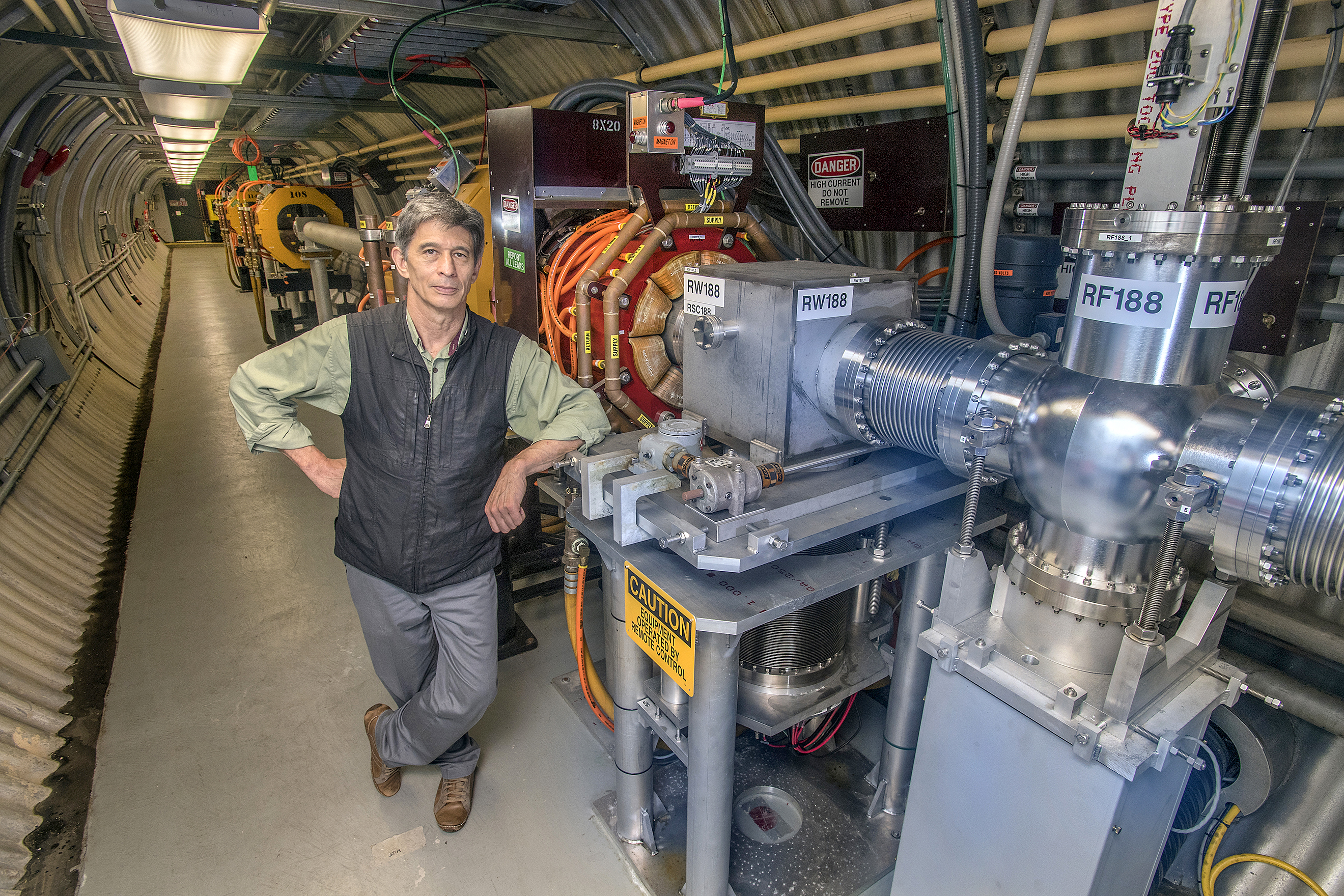[RADNEXT] BNL/NSRL Webinar
The Once and Future of SEE Science Facilities at Brookhaven National Laboratory*
The Brookhaven National Laboratory (BNL) / NASA Space Radiation Laboratory (NSRL) webinar will be held on Wednesday, 16th February 2022. Kevin A. Brown will present the event and review the history, current capabilities, and the proposed future capabilities for applied use experiments at BNL. Among the contributors are Sandra Biedron, Mark Palmer, Charles Pearson, Adam Rusek, Michael Sivertz, and Peter Thieberger.

The target table and dosimetry chambers at NSRL, with Trevor Olsen, NSRL operator
Applied use classes of experiments in the U.S. began in the early 1980s at Sandia National Laboratory, JPL, and the BNL TVDG, studying radiation effects on electronic components. In the early 1990s NASA began high energy radiation effects experiments at the AGS (in the A3 beamline). In the late 1990s a project began to build a new beamline off the AGS Booster for a dedicated NASA facility (NSRL). NSRL was commissioned and began full operations in 2003. NSRL has provided beams of many ions from protons to thorium, ranging in energy from 50 MeV/n to 1500 MeV/n (ion species dependent, protons up to 2500 MeV), and extracted from the AGS Booster with masses and energies that allow simulation of the cosmic ray environment encountered in space. The NSRL facility offers ideal conditions for radiation effects experiments, with precision dosimetry and beam imaging systems, experimental staging facilities with temporary storage, and dedicated support staff. BNLs TVDG continues to support electronics testing providing beams up to 28.5 MeV/amu. Active applications at the BNL TVDG also include calibration of spacecraft instruments, deep ion implantations for the development of the next generation of SiC-based semiconductors, development of enhanced superconductors, membrane irradiations for the fabrication of track-etched filter materials and nuclear cross-section measurements for the optimization of isotope production.

The NSRL beamline, with Adam Rusek standing next to an octupole
Recently, an analysis of alternatives study was led by groups of radiation effects experimenters in the U.S. which showed that the current demand for SEE facilities far exceeded the available capacity of existing facilities. To meet projected demands for high energy effects testing, BNL has proposed building a new facility to operate off the AGS, using the existing experimental floor previously used for high energy fixed target experiments. BNL is also researching advanced accelerator methods to create compact particle sources for radiation effects experiments.
*Work supported by Brookhaven Science Associates, LLC under Contract No. DE-SC0012704 with the U.S. Department of Energy.
Acronym guide:
A3 – beamline on the AGS Experimental floor for fixed target experiments (1960’s-2002)
AGS – Alternating Gradient Synchrotron
BNL – Brookhaven National Laboratory
HEET – High Energy Effects Testing
JPL – NASA Jet Propulsion Laboratory
NASA – U.S. National Aeronautics and Space Administration
NSRL – NASA Space Radiation Laboratory
RHIC – Relativistic Heavy Ion Collider
SEE – Single Event Effects
SEU – Single Event Upsets
TVDG – BNL Tandem van de Graaff facility
Kevin A. Brown
Kevin A. Brown is a Physicist at BNL and an adjunct Professor in the Electrical and Computer Engineering Department at Stony Brook University. Kevin began his career in experimental high-energy spin physics and moved into accelerator physics when BNLs AGS was converted (in the mid-1980s) to provide polarized beams for fixed target spin analyzing power experiments. Kevin was a member of the AGS Accelerator Physics (AP) group for many years where he was a member of the design and commissioning team for the NASA Space Radiation Laboratory (NSRL). He was responsible for the AGS extraction systems for fixed target experiments, including the g-2 experiment when it ran off the AGS. He was part of the Spin dynamics team that designed and commissioned the polarized proton systems for RHIC, and he was a member of the RHIC commissioning team. Kevin continues to work in the BNL Collider-Accelerator department where he has served as the RHIC scheduling physicist and as RHIC run coordinator. He is currently leading the design and development of the proposed BNL HEET facility.
BNL is seeking Expressions of Interest for potential users of a new High Energy Single Event Effects Test facility (HEET). Please visit the following website for more information or contact Kevin Brown (brownk@bnl.gov) if you have questions.
https://www.bnl.gov/techtransfer/heet.php
Brookhaven National Laboratory
Bldg. 911C, Upton, NY 11973

Registration for the seminar is now open.

